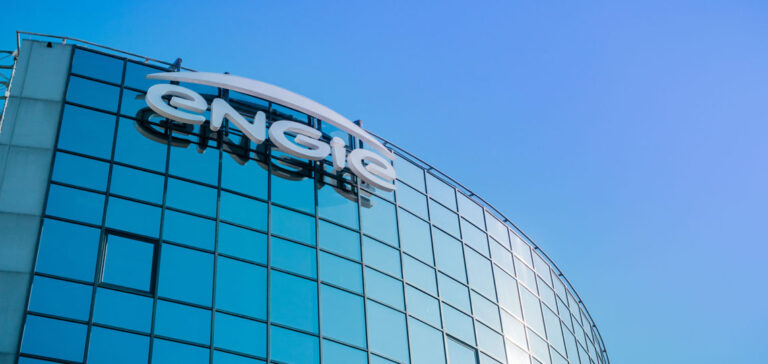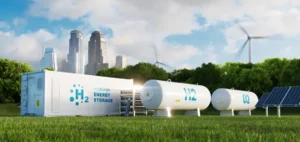ENGIE invests in Magnetic Refrigeration to Revolutionize Green Hydrogen. ENGIE New Ventures (ENV), ENGIE’s Research & Innovation investment fund dedicated to innovative start-ups accelerating the energy transition, has invested in MAGNOTHERM. This German start-up, founded in 2019 in Darmstadt, is developing a hydrogen liquefaction process. This process is based on magnetic refrigeration and raised 6.8 million euros this year.
Magnetic Refrigeration for Green Hydrogen
The disruptive technology developed by MAGNOTHERM uses magnetic refrigeration to liquefy hydrogen. This means it can be transported and stored in larger quantities. It can also be used for cold production (refrigerators, air conditioners). This process is based on the magnetocaloric effect (ECM). This effect allows the temperature of a magnetic material exposed to an external magnetic field to change.
The Road to Economically Viable Hydrogen Liquefaction
Hydrogen liquefaction using MAGNOTHERM technology is currently in the development phase. Through this investment, ENGIE intends to play an active part in this development. It draws on the know-how and expertise of Lab CRIGEN. This is ENGIE’s R&D center dedicated to green gases (hydrogen, biogas, liquefied gases). ENGIE and MAGNOTHERM are also part of a European consortium as part of the HyLICAL project funded by the European Union. The aim of the project is to build Europe’s first magnetic hydrogen liquefier.
Hydrogen Liquefaction: Key to the Energy Transition
MAGNOTHERM’s technology will reduce the cost of hydrogen liquefaction, making it economically viable. This paves the way for the emergence of a hydrogen transport logistics chain for the development of the entire hydrogen industry. This ambition is in line with ENGIE’s strategy of leading the energy transition with a strong decarbonization policy and achieving carbon neutrality by 2045.
Promising prospects for Green Hydrogen
Valérie Ruiz Domingo, Vice President Hydrogen at ENGIE, said: “ENV’s investment in MAGNOTHERM is an important step for ENGIE in the development of a renewable hydrogen supply chain ecosystem. It aims to produce, liquefy and transport green hydrogen over a distance compatible with the European territory. This technology could represent a breakthrough innovation for H2 liquefaction, and ENGIE, through its Research Center, will support its development for future industrialization.”
Timur Sirman, co-CEO of MAGNOTHERM, added: “We are very pleased with the valuable support of one of the world’s largest energy companies. We hope that we will now be able to answer the question of how to transport green hydrogen to or within Europe and use it faster, much faster.”
The advent of Green Hydrogen
ENGIE and MAGNOTHERM are convinced that green transformation requires green hydrogen. In addition, it supports the associated infrastructure for safe and efficient transport. In addition, industries such as aviation, shipping and other heavy-duty applications could benefit massively from hydrogen liquefaction based on magnetocaloric cooling technology, and more rapidly achieve carbon neutrality. MAGNOTHERM’s aim is to offer a scalable solution on an industrial scale. Construction of the prototype industrial-scale hydrogen liquefaction plant is scheduled for 2025.
The Implication of Green Hydrogen for the Future of Energy
This joint effort should contribute to a more resilient response to future industrial needs. Several studies predict that by 2030, when the first magnetocaloric hydrogen liquefier reaches industrial scale, total hydrogen demand will rise to 40 to 90 terawatt-hours per year. This corresponds to an electrolysis capacity of 22 to 37 gigawatts. That’s around eighty times the world’s current installed electrolysis capacity.






















